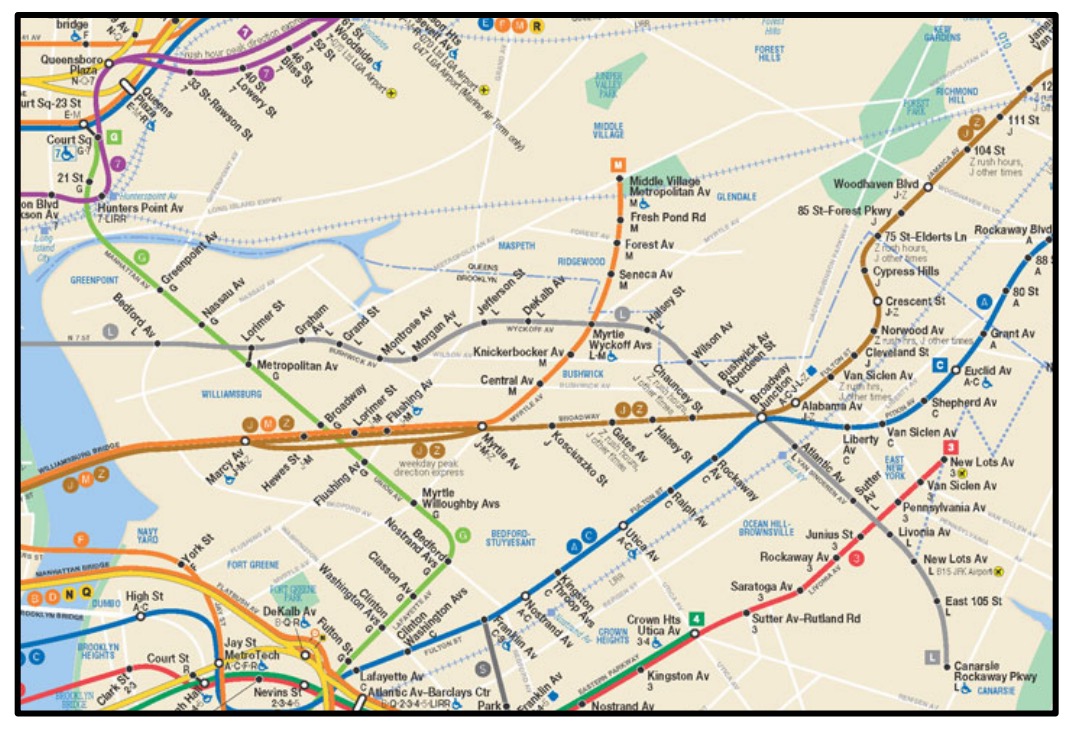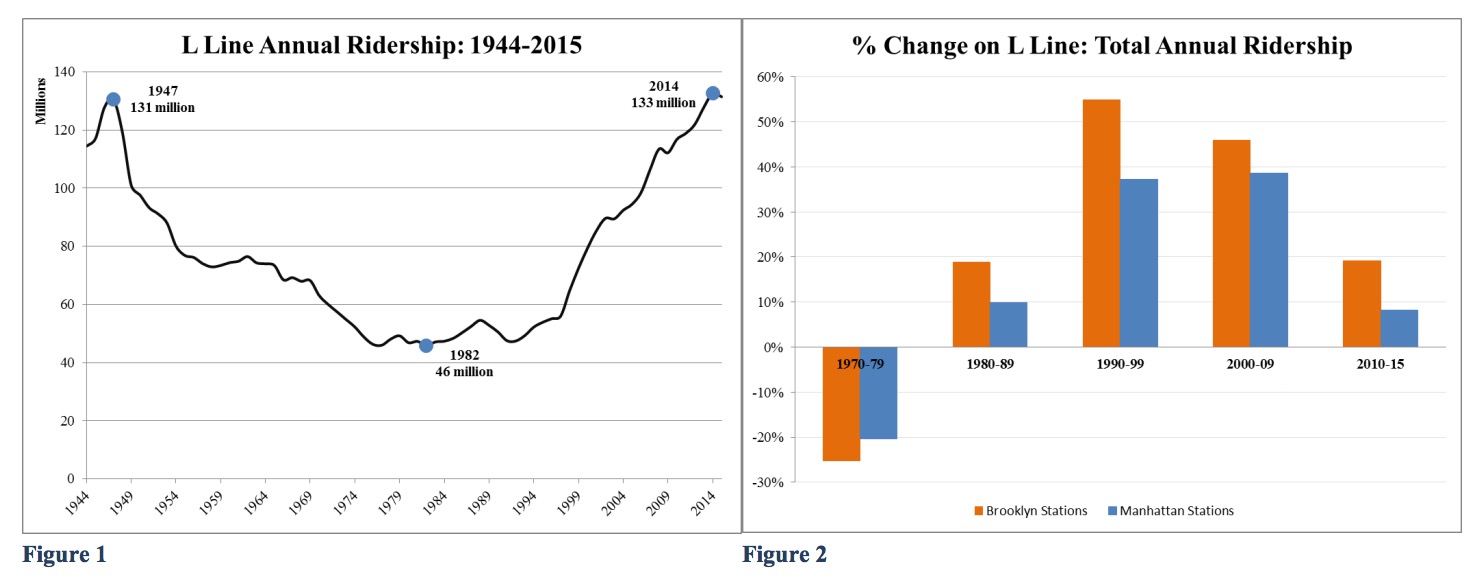NYU RUDIN CENTER FOR TRANSPORTATION
Executive Summary
 The L train tunnel between Manhattan and Brooklyn will close fully to trains for 18 months in 2019 to repair extensive damage from Superstorm Sandy. The construction will require a shutdown of service in all of Manhattan and continuing regular service between Bedford Avenue and Canarsie, with no connection on that line between Brooklyn and Manhattan.
The L train tunnel between Manhattan and Brooklyn will close fully to trains for 18 months in 2019 to repair extensive damage from Superstorm Sandy. The construction will require a shutdown of service in all of Manhattan and continuing regular service between Bedford Avenue and Canarsie, with no connection on that line between Brooklyn and Manhattan.
The L has become synonymous with the Brooklyn brand; ridership at Brooklyn’s Bedford Avenue station has increased more than thirty percent since 2010. The L train’s surrounding Brooklyn communities will absorb the economic impact of this tunnel closure: jobs, commutes dining and nightlife will be affected.
- Of the 225,000 daily residents that commute via the Canarsie Tube, more than 65,000 of them are travelling to their primary place of employment.
- Residents of Williamsburg and Bushwick, who typically rely on the L train, currently enjoy average commute times of less than 35 minutes.
- More than 1,000 restaurants surround L train stations in Brooklyn (855) and Queens (145), including five Michelin star-rated restaurants.
- Williamsburg and Bushwick have more liquor licenses per square mile than any other neighborhood in the outer boroughs. The L has allowed nightlife in Williamsburg to flourish.
To mitigate the economic impacts of the L train shutdown on these neighborhoods, the NYU Rudin Center recommends that policymakers act now to institute alternative service options:
- Increase subway service by bolstering connecting lines, including the G, E, R, M, 3, A, C, J and Z to substitute for L train service.
- Institute high-speed bus service, including a peak-hour bus-only lane on the Williamsburg Bridge.
- Develop public]private partnerships with ridesharing companies, including Uber, Lyft, Via and Bridj, to help shuttle Brooklynites to various points in Manhattan.
- Increase East River Ferry service during rush hour, with transfers to subways and buses.
- Offer incentives to bike and car shares, including Citi Bike, ZipCar and Car2Go, to increase offerings near the bases of the Williamsburg Bridge.
- Explore entirely new modes of transportation, including a gondola and scooter share.
- Involve local chambers of commerce and business improvement districts in coordinating evening and weekend service to and from Williamsburg to mitigate impacts.
This long-term closure will give the MTA and city agencies an opportunity to work together and increase city’s transportation options in the long run.
Download full version (PDF): L Train Closure and Mitigation
About the NYU Rudin Center for Transportation
wagner.nyu.edu/rudincenter
The Rudin Center for Transportation Policy and Management at NYU’s Wagner school explores challenges in transportation and infrastructure. The Center draws upon faculty and graduate students to conduct research on cities and mobility, information technology in transportation and access to mass transit.
Tags: Bushwick, L Train, L Train Shutdown, New York City, New York University, NYC, NYU, NYU Rudin Center for Transportation, Subway, Williamsburg







 RSS Feed
RSS Feed